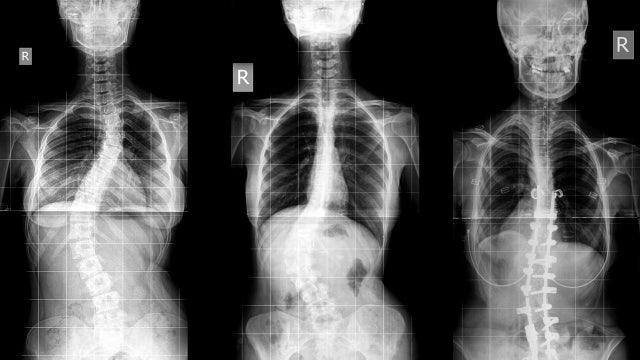Could you develop adult scoliosis?
Q&A with Dr. Manny: What are the symptoms of adult scoliosis?
Some people may believe scoliosis, an abnormal curvature of the spine, is a condition that only develops during adolescence, but it can also turn up in adulthood.
We got this email from a viewer----
Dear Dr. Manny,
My 55-year-old mother was just diagnosed with scoliosis, but I always thought it was something you got when you're a kid? Is it possible she's always had it and just never knew? Are there symptoms that she must have missed or ignored?
Thanks,
John
There are two different types of adult scoliosis. When a patient develops the condition for the first time as an adult, it is called adult "de novo" or degenerative scoliosis. Adult de novo typically arises after the age of 50 and is usually caused by disc degeneration from arthritis or degeneration of the spine.
The other form is known as adult idiopathic scoliosis and is when a curve exists in a patient's teenage years and progresses into adulthood. Unlike degenerative scoliosis, there is no known cause for the idiopathic type. However, some experts theorize that it has a genetic basis and could stem from soft ligaments, weak muscles or abnormal development of bone.
In adults, degenerative or idiopathic scoliosis can have a variety of symptoms.
“Often patients will say that their shoulders feel uneven or that there listing over to one side or feeling like they have a hump on their back,” Dr. Han Jo Kim, a spine surgeon at Hospital for Special Surgery in New York told FoxNews.com.
Although it’s unusual for scoliosis to cause pain, in some cases it can lead to a muscular type of pain.
“Scoliosis is not painful unless you develop secondary changes and degenerative changes, which can result in nerve compression, leg pain and also some muscular pain related to the fact that the scoliosis is causing an asymmetry in the way that your muscles are working,” Kim said. “If you imagine the C shape that you develop with scoliosis, the muscles that are on the outside of the C will have more tension and stress and are working harder than the muscles that are in the inside of the C.”
Digestive issues, including problems with bowel and bladder control, are another uncommon side effect that can occur from serious nerve damage in the spine.
In rare cases when scoliosis is very severe, it can also cause breathing problems and shortness of breath. This is due to the sideways curvature of the spine that could change the shape of the thoracic cage and diaphragm, reducing the lung volume considerably.
“Often times all of these [symptoms] can be treated with non-operative measures such as physical therapy and anti-inflammatory medication, and as a last resort surgery,” Kim said.
Do you have a health question for Dr. Manny? Please tweet them to @drmannyonFOX.
